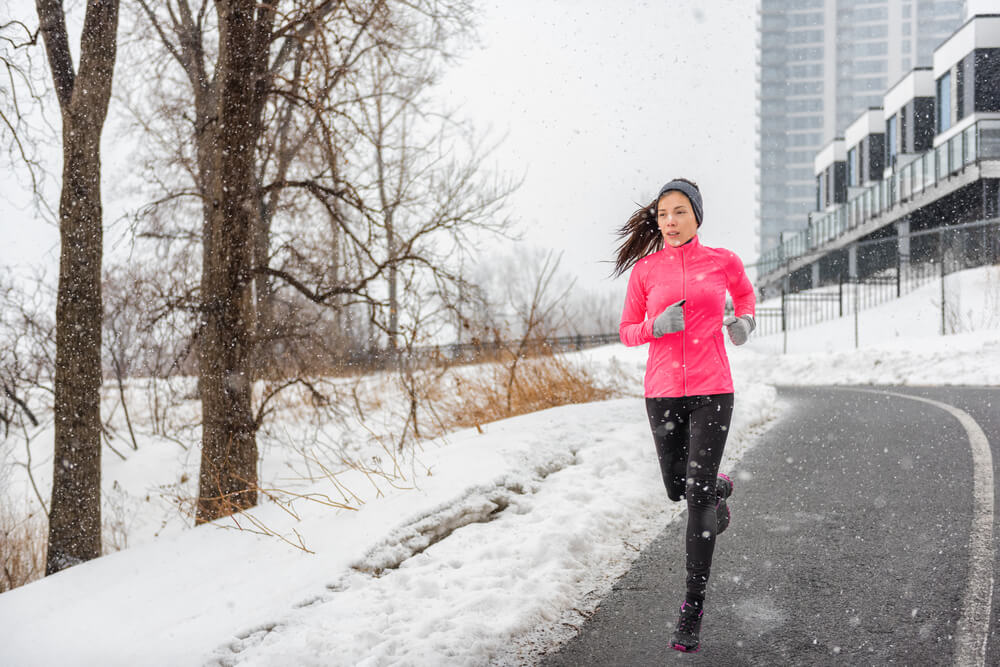
Whether you’re a die-hard runner who won’t be stopped by the cold or a motorist who shares the road with pedestrians, there’s no better time to brush up on your safety skills.
Winter conditions pose considerable risks for runners and drivers alike but taking a few important safety precautions can help keep you and those around you free from preventable harm.
Winter Weather Pedestrian Accident Statistics
Winter and cold-weather conditions significantly increase risks on public roads and walkways. According to NYPD traffic data, this is especially true for pedestrians. Here are the numbers from last winter:
- December 2020
- Injuries: 609
- Fatalities: 4
- January 2021
- Injuries: 516
- Fatalities: 8
- February 2021
- Injuries: 385
- Fatalities: 8
- March 2021
- Injuries: 511
- Fatalities: 10
Safety Tips for Drivers
Because accidents involving motor vehicles pose the greatest threat to pedestrians, it’s vital for all drivers to remain vigilant and obey the rules of the road. Here are some tips for drivers to keep in mind when traveling in areas where pedestrians or runners are present.
- Always YIELD for pedestrians at crosswalks and intersections – it’s the law.
- Never block crosswalks when stopped at an intersection.
- Obey the posted speed limit and reduce your speed when approaching pedestrians.
- Take extra care around schools, playgrounds, and neighborhoods.
- Always pay attention to the task of driving. Never text and drive!
- Remain vigilant for pedestrians and runners, especially when passing stopped vehicles, making turns, and making a right on red.
- Never run red lights and never try to beat the light in areas where pedestrians may be present.
- Share the road! It’s your responsibility to look for others.
Safety Tips for Pedestrians & Runners
As a runner or pedestrian, you can take several precautions to protect yourself. Here are a few tips:
1. Stay Alert
- Always keep an eye on the ground for snow and ice patches on the sidewalk or street, especially when crossing intersections or areas with vehicle traffic.
- Anticipate hazards and slow down to pay extra attention when turning corners, crossing streets, or making other maneuvers.
- Avoid distractions that prevent you from using all your senses. Wet and wintery conditions can weaken tree limbs and create hazards you may be able to see or hear before it’s too late.
2. Map Your Route
- Plan your route in advance, so you always know where you are if you need to turn around or find shelter. Winter weather can be unpredictable, and storms can quickly bring on lots of snow or a significant drop in temperatures low enough to cause frostbite or hypothermia.
- After storms, plan your winter routes for areas where streets and sidewalks will be plowed and cleared of ice.
- Avoid running on roads or run against traffic if no sidewalks are available. Drivers are less able to stop and maneuver in winter conditions, and you’ll need to see them as they approach.
3. Make Yourself Visible
- Run in daylight whenever possible. If your only free time to run is after the sun sets, do everything you can to make yourself visible.
- Avoid running at dawn or dusk when visibility is at its worst for drivers. The setting / rising sun, coupled with snow and icy road conditions, can easily lead to accidents.
- Dress in bright colors and reflective materials that make you stand out to vehicles. After a storm, you can switch to dark, reflective running gear to contrast with snow and attach body lights to the front and back of your jacket.
4. Dress for the Weather
- Dress in layers. Wearing layers can help maintain your body temperature and reduce your risk of hypothermia while also allowing you to remove items if you start to overheat.
- Avoid cotton. Cotton holds onto water and doesn’t provide suitable insulation when wet. Wear breathable materials and a windproof and vent-able shell to better regulate heat loss.
- Wear a hat and gloves. Covering your head and extremities helps retain body heat and reduce the risks of frostbite, which is more likely to affect exposed skin.
- Wear shoes with traction. Running in winter means you’ll likely run through snow, ice, and mud. Wearing cleats or shoes with solid traction can reduce your risks of slipping and falling.
5. Other Ways to Stay Safe
- Run with a partner. You can keep an eye out for patches of ice, oncoming cars, and other hazards for one another and provide help in the event of an emergency.
- Always Carry Your Phone. It’s important to have GPS and a way to contact people in case of emergency.
Steps to Take if You’ve Been Injured
Even with these precautions, runners and pedestrians are still vulnerable to suffering harm in accidents caused by the negligence of others. If you’ve been injured in a motor vehicle accident or as the result of a slip and fall, take the following steps to protect your health and your rights:
- Seek immediate medical attention and follow the recommendations of your doctor.
- Continue treating your injuries as recommended by your provider. Don’t try to tough it out or hope nagging injuries will resolve on their own.
- Collect and save all information surrounding your accident, involved parties, police reports, and medical treatment.
- Speak with a personal injury attorney who can review the facts of your case and provide guidance as to your rights and options for seeking compensation.
The Perecman Firm, P.L.L.C., is a U.S. News “Best Law Firms” ranked personal injury practice that has recovered over half a billion dollars in compensation for victims across NYC. Our attorneys have extensive experience handling vehicle and premises accident claims involving winter-related injuries and can evaluate your potential case during a free consultation. Contact us to request yours.



